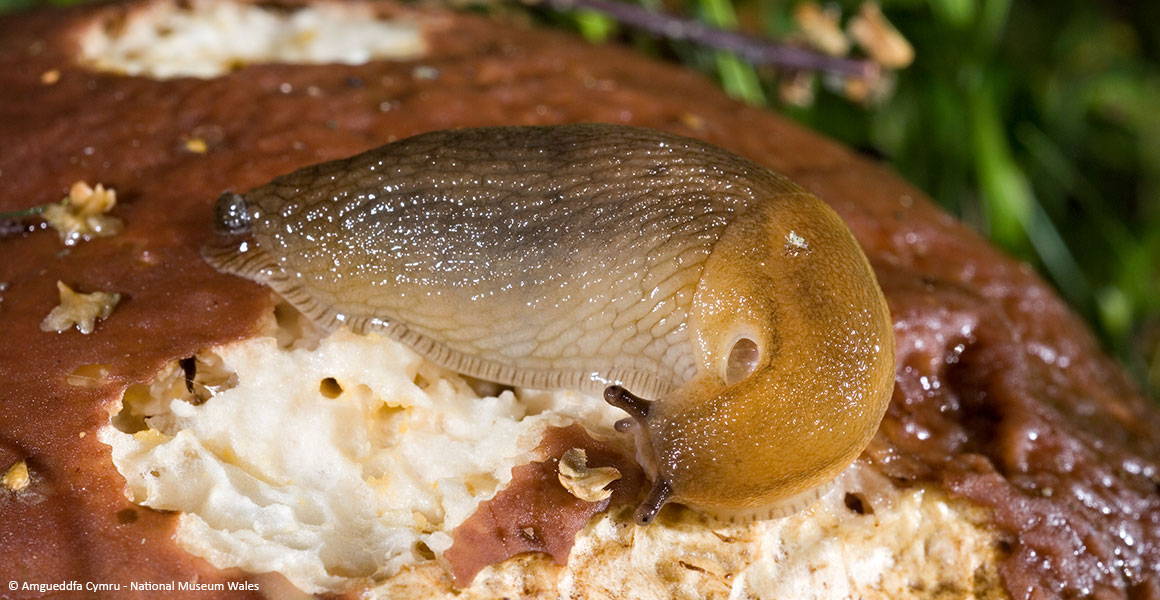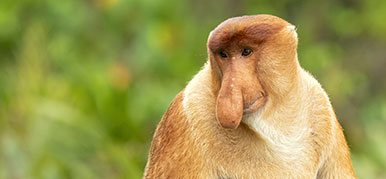Slugs don't usually come to mind when we think about surgery.
But scientists have been inspired by the secretions of some exceptionally sticky gastropods to create a new family of adhesives that could be used to patch wounds.

The Dusky Arion slug produces extra sticky mucus. This has served as inspiration for a new class of tissue adhesives that could one day replace current medical glues. © Amgueddfa Cymru - National Museum Wales
Slugs don't usually come to mind when we think about surgery.
But scientists have been inspired by the secretions of some exceptionally sticky gastropods to create a new family of adhesives that could be used to patch wounds.
Evolution often finds clever solutions to ecological problems and these answers are sometimes used as inspiration for solving our engineering challenges. This field is known as biomimetics.
One such sticking point is glue. Adhesives currently approved for wound repair can be toxic to cells, will bond weakly or won't adhere to anything wet.
But a team of scientists have designed a new family of tissue adhesives that perform exceptionally well in wet and dynamic environments - and they were inspired by slug slime.
The slug-inspired glues are known as Tough adhesives (TAs). They comprise a gel and a sticky solution that work together for maximum effect.
Dr Adam Celiz, a Lecturer in the Department of Bioengineering at Imperial College London, was part of the team that developed the new adhesives. He explains, '"Tough" refers to the mechanical strength of the gel we're making - basically its resistance to rupture.
'It's a hydrogel, so it's 90% water. We apply a solution to one side of the gel and that allows a chemical bond to be formed between the gel and the target interface, which could be a cut or wound.'
The gel in a TA is stretchy and strong as energy applied is dissipated through it. Two types of chemical networks work together as tension in the gel increases and decreases, 'like a shock-absorbing plaster'. One network breaks and reforms, which allows the other to remain intact.

A hydrogel tough adhesive bonded to a heart © Dr Jianyu Li/ Harvard University
A key feature is how well it sticks in wet conditions. This makes TAs potentially optimal for use inside the body - a challenging environment for most current medical glues. The hydrogel is also biocompatible, which means that it can be interfaced with organs and tissue without negative effects.
In one trial the gel was used to patch a defect in an excised pig heart and the organ was inflated and deflated thousands of times. The seal remained intact, with no leaks throughout the test, having dynamically stretched with the pumping muscle.
The Dusky Arion slug (Arion subfuscus) is a species commonly found around the UK and mainland Europe, usually in woodland areas.
The chemical structure of this slugs' sticky defensive mucus inspired TAs. It's also a hydrogel with two oppositely charged components, with bonds that break and reform to allow stretch and strength. The secretions allow these slugs to stick to a wide variety of surfaces.
Jon Ablett, Senior Curator of Mollusca at the Museum, explains, 'Slug mucus has to have lots of different properties and one of them is being an adhesive and a lubricant. The mucus can have antibiotic or anti-parasite properties and some slugs use theirs for feeding. There are lots of slight differences between the species.
'The Dusky Arion uses excessively sticky mucus, not only to stick to the substrate but also for defence. It puts off predators - it can gum up their mouthparts or the beaks of birds.

Arion subfuscus is found commonly throughout the UK, usually in woodland areas © Amgueddfa Cymru - National Museum Wales
'The wonderful thing about Adam's work is just showing how when humans come up with new ideas, animals have usually got there first and we can incorporate some of that into our designs.'
The initial study on TAs was to show their highly adhesive abilities in wet conditions.
Dr Celiz says, 'We were going for a very high bar for adhesion - it's a really good problem to have that it's too sticky. We could lower the adhesive strength by altering our chemical formulation.
'It's a very tuneable system. We could engineer degradability into it if we're looking at tissue regeneration applications.
'For very specific applications it would need to be developed focussing on the specific requirements. So for an emergency situation where there is high trauma and lots of bleeding, we'd have to do a series of tests to show that we could stop bleeding very rapidly.'
This function has been tested on rat liver lacerations and shown to be effective - but testing on larger subjects would be required to show that it is safe.
Dr Celiz is interested in how the hydrogel patches could be adapted to actively benefit the tissues they are stuck to.
'Tissues have different healing capabilities. I'm interested in tissues that wouldn't naturally heal by themselves and may need a helping hand.
'Hydrogels are a really nice platform that we can use as a delivery vehicle. We can load drugs and potentially stem cells down the line that would be released from this patch once they're stuck to the target tissue.'

Just how weird can the natural world be?

Find out about the plants and animals that make the UK home.
Don't miss a thing
Receive email updates about our news, science, exhibitions, events, products, services and fundraising activities. We may occasionally include third-party content from our corporate partners and other museums. We will not share your personal details with these third parties. You must be over the age of 13. Privacy notice.
Follow us on social media